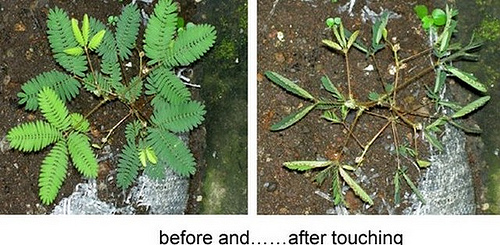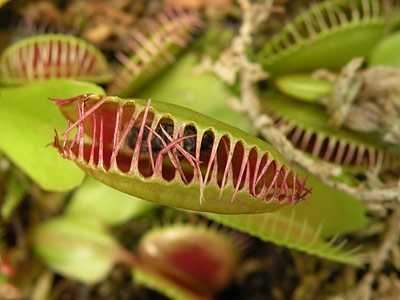Introduction to Plant Responses
Plants, as non-motile organisms, orient and remain in the location of germination for the duration of their life. In order to survive, they must be able to respond to environmental stimuli (Gilroy & Masson, 2008). Many plant behaviors are defense mechanisms enabling the plant to climb toward sunlight, avoid obstacles, seek protection from natural forces, or move in the direction of optimal growth conditions.
Divided into two main types of mechanisms, plants move by either turgor movements or by growth movements (Hart, 1992). Turgor movements occur when changes of cells or cell volume are caused by osmotic change. When cell volume increases or decreases, the plant organ undergoes a change. An example of this would be a sunflower turning to face the sun. Growth movements allow plants to change their postures by changing cellular growth patterns. For example, a plant tendril lengthening to help it climb toward sunlight is a growth movement. The change in turgor or growth can be regulated by endogenous factors, within the plant, or by exogenous environmental factors.
The direction of the plant’s response is characterized and named by how the stimuli affect movement. Tropic responses are plant movements determined by the direction of the stimulus, such as the climbing behavior of some mechano-sensitive vines (Braam, 2004). Nastic responses are mostly independent of the direction of a stimulus, such as the folding up of Mimosa pudicas leaflet.
A nastic response can be a turgor or a growth response to endogenous or exogenous factors (Hart, 1992). A tropic response is always an effect of environmental stimuli. Tropic responses usually happen with growth changes but can also result from turgor changes. In each situation, the plant responds to the stimuli, transfers a signal physiologically, and regulates a response biologically.
Tropic Responses to Varying Stimuli
Phototropism is a growth response towards higher intensity of light. The plant organ may grow towards a unidirectional light as in positive tropism, or grow away from the light indicating a negatively phototropic response (Gilroy & Masson, 2008). Phototropism is common in plants, including algae, mosses, ferns, and seed plants.
Gravitropism is a growth response to gravity where roots, shoots, leaves, and other plant organs will orient in relation to the source of gravity (Gilroy & Masson, 2008). Roots grow downward where they will anchor a plant and absorb nutrients and water. The shoot of a plant that is knocked down will grow faster on the lower side until the shoot is upright again. Other tropisms whose names correlates to the stimuli to which they respond are chemotropism involving a response to chemicals, hydrotropism evident by plant movements responding to water, thermotropism responding to temperature, and thigmotropism stimulated by touch.

Gravitropic response
Other Plant Responses
The leaves of some plants, especially legumes change positions throughout the day using nyctinastic movements (Hart, 1992). During the day the leaves are oriented outward from the stem while at night the leaves are folded downward along the stem. These turgor movements are known as ‘sleep movements’ or nyctinastic movements which literally means ‘night-folding’. This is an endogenously regulated leaf movement. Mimosa leaves exhibit plant turgor movements where the direction is not determined by the stimuli. This thigmonasticity is also exhibited by the Dionaea (Venus flytrap) closing after detection of an insect inside it (McIntosh, 2012).

Thigmonastic response of a Mimosa plant

Thigmonastic response of Venus Fly Trap
Some responses to touch are not rapid as exhibited in thigmonastic and thigmotropic plants or where organs are specialized to respond to externally applied mechanical stress. These more gradual morphogenetic changes occur slowly over time and use a mechanism termed by Mark Jaffe as thigmomorphogenesis (Braam, 2004). Jaffe observed thigmomorphogenesis in Arabidopsis plants when plants were touched three times daily and growth was stunted (Chehab, Eich,& Braam, 2008).

Thigmomorphogenic Arabidopsis plant showing stunted growth and flower development after repeated touching.
|
|
|
|
|
|
|
|
|
|
|
|